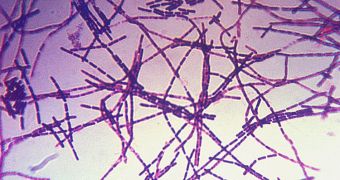The fatal infections caused by Bacillus anthracis, commonly known as anthrax, may soon become treatable, thanks to the work of experts at the University of Michigan (U-M), in the United States.
In a recent study, the team was able to identify a series of new potential targets on the bacteria, which may be used by the next generation of drugs developed to treat the disease. At this point, anthrax cannot be treated fully, but its effects can be managed.
The U-M College of Pharmacy's Hans W. Vahlteich professor of medicinal chemistry, David Sherman, was the leader of the research team that conducted the work. He is also a faculty member with the Life Sciences Institute at the university.
Together with colleagues, the expert has been recently able to discover a new way of preventing the bacteria from capturing iron, a chemical that is absolutely necessary for its survival, and which is responsible for many of the microorganism's disease-causing traits.
What scientists plan to do next is test a series of powerful new antibiotics that target the iron-acquiring mechanism in B. anthracis directly. The drugs could potentially both treat and prevent infections, the investigators believe.
Anthrax is not the only drug-resistant infectious agent out there today. More and more bacteria are becoming resilient to the effects of antibiotics, for a wide variety of reasons. The new study could lead to the development of broad-spectrum antibiotics against these pathogens.
Sherman says that a cure for anthrax is still several years in the future, but adds that experts with the LSI Center for Chemical Genomics are currently using high-throughput screening methods to search for the most effective potential drug against the bacteria.
“This organism continues to be a serious security threat, as there are inadequate responses to natural or engineered drug-resistant forms of the micro-organism,” the U-M team leader explains.
“We are already following active extracts from a large natural products library and hope to have new structures of antibiotic molecules very soon,” he goes on to say. Details of the work were published in the May 4 issue of the Journal of Biological Chemistry.
“Our efforts are part of a major program funded by the Great Lakes Regional Center of Excellence for Biodefense and Emerging Infectious Disease to identify new small molecule antibiotics and vaccines against biowarfare agents and other high-risk infectious microbes,” Sherman concludes.

 14 DAY TRIAL //
14 DAY TRIAL //